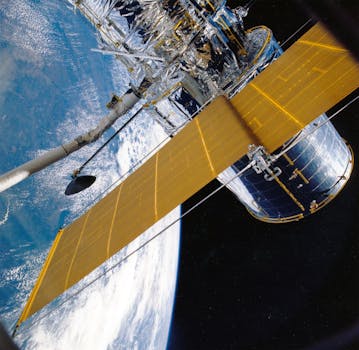
Orbiting Innovations: Key Updates in Satellite Telecommunications Technology
Satellite Telecommunications
Satellite Telecommunications is revolutionizing the way we communicate and access information. With the increasing demand for global connectivity, the satellite telecommunications industry is experiencing significant growth and innovation. The use of satellites in telecommunications has been around for several decades, but recent advances in space technology have enabled the development of more efficient, cost-effective, and high-capacity satellite systems.
One of the key updates in satellite telecommunications technology is the development of high-throughput satellites (HTS). HTS systems use advanced technologies such as spot beams and frequency reuse to provide higher bandwidth and faster data speeds. This has enabled satellite operators to offer a range of services, including broadband internet, television broadcasting, and mobile connectivity.
Another significant development in satellite telecommunications is the emergence of low-Earth orbit (LEO) constellations. LEO constellations consist of a large number of small satellites that operate in low Earth orbit, providing global coverage and high-capacity connectivity. Companies such as SpaceX, OneWeb, and Amazon’s Kuiper Systems are leading the development of LEO constellations, with plans to launch thousands of satellites in the coming years.
Advances in Space Technology
The growth of the satellite telecommunications industry is driven by advances in space technology. One of the key areas of innovation is in the development of more efficient and powerful satellite platforms. Modern satellites are designed to be more compact, lightweight, and fuel-efficient, enabling them to operate for longer periods and provide more capacity.
Another area of innovation is in the development of advanced propulsion systems. New propulsion systems such as electric propulsion and advanced ion engines are enabling satellites to operate more efficiently and maneuver more effectively in space. This has significant implications for the satellite telecommunications industry, as it enables satellites to be launched into orbit more quickly and to operate for longer periods.
Increasing Demand for Global Connectivity
The demand for global connectivity is driving the growth of the satellite telecommunications industry. With the increasing use of mobile devices, social media, and online services, there is a growing need for fast, reliable, and ubiquitous connectivity. Satellite telecommunications provides a solution to this problem, enabling connectivity in remote and underserved areas where traditional telecommunications infrastructure is limited or non-existent.
The use of satellite telecommunications is also becoming more widespread in the maritime and aviation industries. Ships and aircraft are using satellite connectivity to stay in touch with shore-based operations and to access critical services such as weather forecasting and navigation.
Conclusion
In conclusion, the satellite telecommunications industry is experiencing significant growth and innovation, driven by advances in space technology and increasing demand for global connectivity. The development of high-throughput satellites, LEO constellations, and advanced propulsion systems is transforming the industry and enabling the provision of faster, more reliable, and more ubiquitous connectivity. As the industry continues to evolve, we can expect to see new and innovative applications of satellite telecommunications technology, from providing connectivity in remote and underserved areas to enabling the development of new services and applications.




